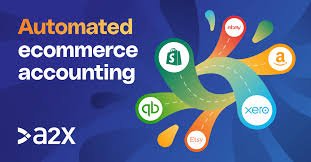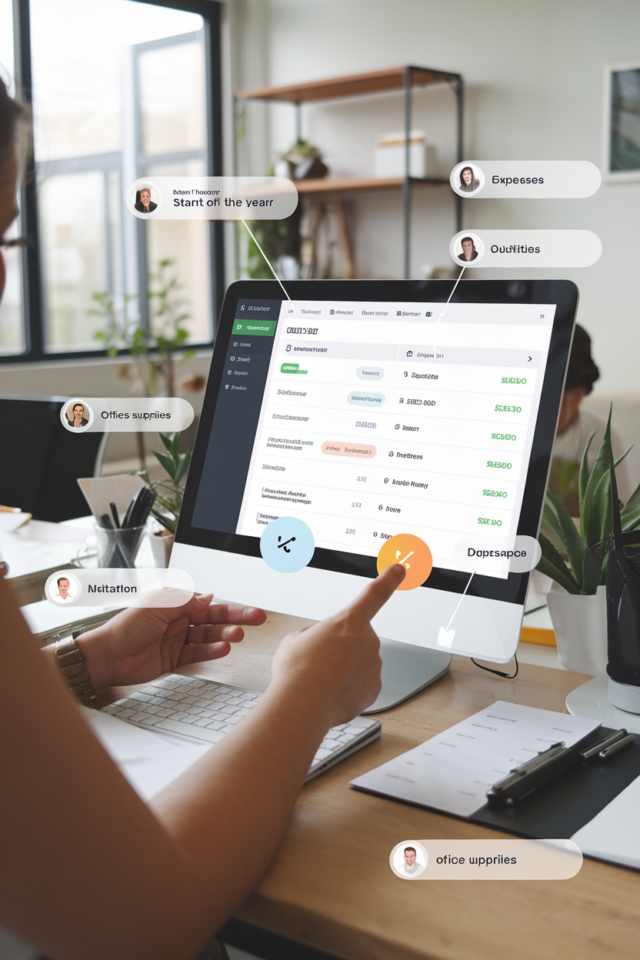So, you’ve taken the plunge into the bustling world of Amazon selling. Congrats! But now comes the not-so-glamorous part—keeping track of your finances. If the thought of manually reconciling sales data sends shivers down your spine, you’re not alone.
Integrating Amazon accounting software can feel like navigating a maze without a map. But fear not! We’re here to guide you through the process, turning that maze into a walk in the park.

Table of Contents
- 1 Why Bother Integrating Amazon Accounting Software?
- 2 Understanding the Basics of Integrating Amazon Accounting Software
- 3 Choosing the Right Amazon Accounting Software
- 4 Step-by-Step Integration Guide
- 5 Handling Complexities
- 6 Best Practices
- 7 Common Pitfalls and How to Avoid Them
- 8 The Benefits You’ll Reap
- 9 Staying Compliant
- 10 Final Thoughts
- 11 Ready to Simplify Your Bookkeeping?
Why Bother Integrating Amazon Accounting Software?
You might be thinking, “Can’t I just handle my Amazon accounting manually?” Sure, you could. But imagine trying to fill a bathtub with a teaspoon—it’s possible, but not practical. Integrating your sales data automates the tedious parts, reduces errors, and frees up your time to focus on growing your business.
Understanding the Basics of Integrating Amazon Accounting Software
Before diving in, let’s get our bearings. Integration means connecting your Amazon seller account with your accounting software so that sales, refunds, fees, and other financial data flow seamlessly between them. This ensures your financial records are up-to-date and accurate.
Key Terms to Know:
- API (Application Programming Interface): A set of rules that allows different software applications to communicate.
- Marketplace Facilitator Tax: Taxes collected and remitted by Amazon on your behalf.
- Settlement Period: The time frame Amazon uses to calculate payouts to sellers.
Choosing the Right Amazon Accounting Software
Not all accounting software is created equal, especially when it comes to Amazon accounting. You’ll want a platform that plays nice with Amazon’s systems.
Popular Choices:
- QuickBooks Online: A user-friendly interface with robust features
.
- Xero: Great for small businesses with strong third-party integrations

- FreshBooks: Ideal for service-based businesses but can handle e-commerce with add-ons.

Step-by-Step Integration Guide
Alright, let’s roll up our sleeves.
1. Prepare Your Amazon Seller Account
Ensure your Amazon seller account is in good standing. Navigate to your Seller Central dashboard and familiarize yourself with the reports available, such as the “Payments” and “Fulfillment” reports.
2. Choose an Integration Method
You generally have two options:
- Built-in Integration: Some accounting software offers native integration with Amazon.
- Third-Party Connectors: Tools like A2X, Codat, or Zapier can bridge the gap.



3. Set Up the Connection
For Built-in Integration:
- QuickBooks Online Example:
- Log in to QuickBooks Online.
- Go to the “Apps” section and search for “Amazon.”
- Follow the prompts to connect your Amazon seller account.
For Third-Party Connectors:
- Using A2X:
- Sign up for an A2X account.
- Connect your Amazon seller account to A2X.
- Connect A2X to your accounting software.
- Configure your account settings in A2X to match your chart of accounts.
4. Map Your Accounts
This is where you decide how different types of Amazon transactions correspond to your accounting categories.
- Sales Revenue: Map to your “Sales” account.
- Amazon Fees: Map to an “Amazon Fees” expense account.
- Refunds and Returns: Map to a “Returns” or “Customer Refunds” account.
5. Import Historical Data (Optional)
If you want past transactions in your accounting software:
- Adjust the date range during the initial setup.
- Be cautious to avoid duplications.
6. Review and Reconcile
Once the data starts flowing:
- Regularly Review Transactions: Ensure everything is categorized correctly.
- Reconcile Bank Statements: Match your Amazon payouts with bank deposits.
Handling Complexities
Dealing with Marketplace Facilitator Taxes
Amazon collects certain taxes on your behalf. Make sure these are recorded properly to avoid discrepancies.
- Set Up a Tax Liability Account: Track taxes collected and remitted by Amazon.
Multi-Currency Transactions
If you sell in multiple countries:
- Ensure your accounting software supports multi-currency accounting.
- Use real-time exchange rates for accuracy.
Best Practices
Regularly Update Your Software
Keep your accounting and integration software up-to-date to benefit from the latest features and security patches.
Backup Your Data
Regular backups prevent data loss and give you peace of mind.
Common Pitfalls and How to Avoid Them
Duplicate Entries
- Cause: Importing data multiple times.
- Solution: Set date ranges carefully and monitor imports.
Misclassified Transactions
- Cause: Incorrect account mapping.
- Solution: Double-check your mappings and adjust as needed.
Ignoring Fees and Adjustments
- Cause: Overlooking Amazon’s fees.
- Solution: Ensure all fees are accounted for in your expense accounts.
The Benefits You’ll Reap
- Time Savings: Automation reduces manual data entry.
- Accuracy: Minimizes human error.
- Financial Insights: Real-time data helps in making informed decisions.
- Stress Reduction: Less worry about missed transactions or tax compliance.
Staying Compliant
Remember, proper accounting isn’t just about numbers—it’s about compliance. Integrated systems help you stay on the right side of tax laws and regulations.
Final Thoughts
Integrating your Amazon sales data with your accounting software might seem daunting at first, but it’s a game-changer. Think of it like switching from a bicycle to a car—you’ll get to your destination much faster and with less effort.
So, are you ready to streamline your Amazon accounting and focus on what you do best—growing your business?
Ready to Simplify Your Bookkeeping?
If managing your Amazon accounting still feels like juggling flaming torches, you’re not alone. Centsiq is here to help you make sense of the numbers without breaking a sweat. We can streamline your bookkeeping process, giving you more time to focus on scaling your business. Learn more about how Centsiq can transform your financial management today!







